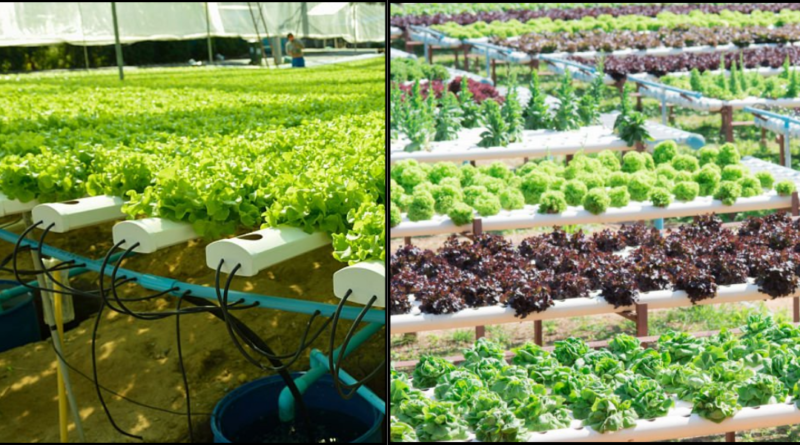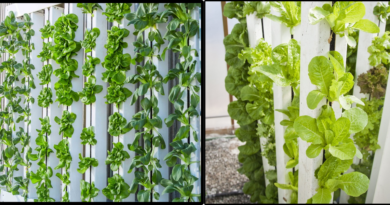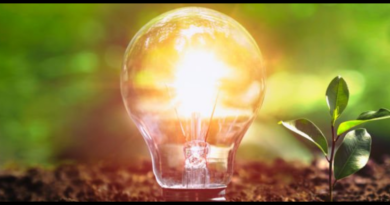Organic Kitchen Garden: Tech Tips from Apps to Smart Planters”

Introduction:
Organic kitchen garden have given rise to a new era of innovation. The introduction of cutting-edge technology into conventional gardening methods has become a game-changing force as we search for effective and sustainable methods to grow our own fresh vegetables. The possibilities are endless, ranging from smart planters and clever mobile applications to future ideas like AI-powered crop rotation and virtual-reality organic garden design. This essay delves into the fascinating world of tech hacks for organic kitchen garden, Come along on an exploration into the world of smart organic kitchen garden, where the coexistence of technology and nature yields an abundant and technologically enhanced harvest.
Definition:
Organic kitchen garden incorporate an extensive range of technical innovations designed to improve the effectiveness, yield, and sustainability of the customary method of cultivating fruits, vegetables, and herbs. In order to handle a variety of gardening-related issues, from accurate soil management to intelligent irrigation and even hands-free harvesting, these solutions make use of contemporary technology like smartphone applications, smart sensors, artificial intelligence, and automation. Organic kitchen garden and technology combine to create a wealth of opportunities that let people embrace agriculture’s future while still feeling deeply rooted in the land and the food they grow.
Organic kitchen garden tech tips:
Here are some tech tips that can transform your organic kitchen garden into a smart and efficient oasis of fresh produce.
Apps for Smart Gardening: Your Green Thumb Friend
- For example, you may monitor the progress of your plants, schedule fertilization and watering schedules, and exchange gardening advice with other gardeners by using the “Gardenize” app.
- Benefits include customized care plans, real-time plant monitoring, and an endless supply of information for horticultural lovers.
Soil Testing Kits: Convenient, On-the-Go Precision Gardening
- For example, the “Luster Leaf” soil testhttps://en.wikipedia.org/wiki/Soil_test kit gives immediate answers for the levels of potassium, phosphate, nitrogen, and pH.
- Benefits: Ensure optimal plant health and increased output by adjusting soil conditions based on precise measurements.
Irrigation Systems with Automation: Intelligent Watering
- In one instance, the “Rachio” smart sprinkler controller adjusts watering schedules in response to plant requirements and weather predictions.
- Benefits: It prevents overwatering, preserves water, and guarantees plants get the proper quantity of moisture for development.
LED Grow Lights: Extend the Season of Your Plants
- For example, the “Roleadro” LED grow lights give indoor plants a broad spectrum of light to support photosynthesis.
- Benefits include the capacity to cultivate a wide range of plants indoors, higher development rates, and year-round culture.
Vertical Farming Methods: Optimize Area and Efficiency
- As an illustration, the “Tower Garden” allows vertical farming to maximize crop yield while conserving space.
- Benefits: It reduces ecological footprints and encourages organic kitchen garden, making it perfect for space-constrained urban populations.
Garden Robotics: Hands-Free Harvesting
- For instance, a robot called “Harvest Crooked Robotics” is designed to automate the labor-intensive process of harvesting https://en.wikipedia.org/wiki/Harvest strawberries.
- Benefits include increased productivity, lower labor expenses, and guaranteed timely and accurate harvesting.
Weather Monitoring Tools: Make Well-Informed Plans in Advance
- For instance, the “AcuRite” weather station offers precise forecasts and up-to-date information on the local weather.
- Benefits: Assists in coordinating planting, harvesting, and other gardening tasks with the weather.
Smart Planters and Sensors: Data-Driven Cultivation
- Example: The “Parrot Flower Power” sensor monitors sunlight, temperature, soil moisture, and fertilizer levels.
- Benefits: Receive real-time data on your plants’ environment, enabling proactive adjustments for optimal growth conditions.
Drip Irrigation Systems: Water Efficiency at its Best
- Example: “Netafim” offers smart drip irrigation systems, minimizing water waste and ensuring precise water delivery.
- Benefits: It saves water, prevents soil erosion, and fosters deep root development for healthier plants.
Apps for Organic Fertilizer: Customized Diet Plans
- For instance, the “GrowBuddy” software allows you to design unique nutrition schedules for organic kitchen garden fertilizers according to the kinds of plants you grow.
- Benefits: Increase nutrient intake, reduce your dependency on chemicals, and encourage environmentally friendly gardening techniques.
3D Printing for Garden Tools: Customization Unleashed
- Example: Design and print personalized organic kitchen garden tools for specific tasks using a 3D printer.
- Benefits: Tailor tools to your garden’s unique needs, reduce waste, and experiment with innovative designs.
Aquaponics Systems: Complementary Planting
- For instance, the “Back to the Roots” Water Garden Kit creates a self-sustaining environment by combining aquaponics with a fish tank.
- Benefits: minimal water use, effective nutrient recycling, and an enjoyable educational component for children.
Learn and Share on Community-Driven Gardening Platforms
- As an illustration, sign up for sites like “Smart Gardener” to interact with other gardeners, exchange stories, and learn insightful things.
- Advantages: Gain access to a network for advice sharing, troubleshooting, and staying current with gardening trends.
Smart Pest Control: Nipping Problems in the Bud
- Example: The “Gardening Companion” app identifies pests through image recognition and suggests eco-friendly solutions.
- Benefits: early detection, targeted intervention, and the promotion of natural pest control methods.
Smart Controllers for Automating Gardens: Effortless Administration
- For instance, “FarmBot” is an automated robotic system that precisely waters, plants seeds, and keeps an eye on your garden.
- Benefits: maximizes efficiency in a large-scale organic kitchen garden, guarantees constant upkeep, and minimizes physical effort.
Smart Composting Solutions: Transforming Waste into Gold
- Example: “The Zera Food Recycler” turns kitchen scraps into nutrient-rich compost in 24 hours.
- Benefits: minimizes waste, accelerates composting, and provides a sustainable source of organic kitchen garden fertilizer.
Solar-Powered Garden Devices: Capturing Solar Energy
- Examples of energy-efficient devices include ventilation systems, water pumps, and garden lighting that run on solar power.
- Advantages include more environmentally friendly gardening tool powering, reduced utility costs, sustainable energy, and an organic kitchen garden.
Companion Planting Apps: Harmonizing Plant Relationships
- Example: The “Gardenate” app suggests companion plants that promote growth and deter pests when planted together.
- Benefits: Maximizes space, minimizes pest issues, and enhances overall garden health through strategic plant pairings.
Gamified Gardening: An Engaging and Informative Experience
- As an illustration, the smartphone game “Viridi” encourages users to take care of virtual succulents in order to develop their real-world plant-care abilities.
- Benefits: Engages people, transfers information about gardening, and creates a joyful yet responsible organic kitchen garden atmosphere.
Blockchain in Seed Traceability: Ensuring Quality and Authenticity
- Example: Companies like “Plenty” use blockchain BLOCKCHAIN REVOLUTION: Organic Agriculture Transparency to trace the origin and quality of seeds, ensuring authenticity.
- Benefits: It guarantees seed quality, promotes transparency, and builds trust in the source of your plants.
AI-Assisted Plant Disease Identification: Prompt Intervention
- For instance, the “Plantix” app uses AI to recognize plant illnesses from photos and provide quick solutions.
- Benefits: preventing extensive outbreaks in your garden, identifying problems early, and treating them quickly.
IoT-Integrated Hydroponic Systems: Advanced Crop Production

- For example, an IoT-enabled hydroponic system called “Gro.io” is an example of a system that monitors and modifies fertilizer levels to enhance plant development.
- Benefits: Enhances nutrient absorption, uses less water, and makes remote hydroponic garden monitoring possible.
Smart Beekeeping for Pollination: Enhancing Garden Ecosystems
- Example: The “BeeScanning” app utilizes AI to monitor bee health, promoting effective pollination in your garden.
- Benefits: It boosts crop yields, supports bee conservation, and ensures a well-balanced garden ecosystem.
Planting in a Virtual Reality Garden: Explore Your Space Before You Plant
- For instance, “Garden Plan Pro” lets customers utilize virtual reality technology to stroll through their designed landscape.
- Benefits: Offers a realistic sneak peek of how your garden will look in the future, assists with smart planting, and helps visualize organic kitchen garden plans.
Social Media Gardening Difficulties: Involving the Community
- For instance, social media sites such as Instagram arrange gardening competitions where participants showcase their achievements and advice.
- Benefits: Inspires innovation in gardening techniques, promotes information sharing, and builds a feeling of community.
Crop Rotation Planning Assisted by AI: Maximize Nutrient Cycling
- As an illustration, AI algorithms in applications such as “Vegetable Planting Planner” recommend the best crop rotation schedules for soil health.
- Benefits: It enhances soil fertility, guards against illnesses transmitted via the soil, and fosters long-term, sustainable organic kitchen garden health.
Smart Harvesting Drones: Streamlining the Harvest Process
- Example: “Blue River Technology” employs drones equipped with cameras and AI to identify and harvest ripe fruits and vegetables. Sustainable Agriculture through Robotics and Automation
- Benefits: It reduces labor costs, accelerates harvest times, and ensures efficient crop management.
Mobile-Connected Weather Stations: Real-Time Climate Monitoring
- Example: “WeatherFlow” provides weather data directly to your mobile device, aiding in timely gardening decisions.
- Benefits: accurate weather predictions, prevention of weather-related damage, and optimization of planting schedules.
Satellite Imaging for Precision Planning: Optimize Your Layout
- Example: Services like “FarmLogs” use satellite imagery to analyze your organic kitchen garden, providing insights for efficient layout planning.
- Benefits: maximizes space utilization, minimizes resource wastage, and enhances overall garden design.
CONCLUSION:
With the help of these cutting-edge methods, organic kitchen gardeners may now attain previously unheard-of levels of production, sustainability, and accuracy as we navigate the rapidly changing technological world. By adding these innovative techniques to your gardening toolkit, you’ll be able to remain ahead of the curve and help advance sustainable and productive organic kitchen garden farming methods. Allow your organic kitchen garden to flourish in the digital era by embracing the confluence of nature and technology. Cheers to your successful gardening!




